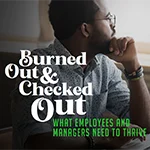 |
| Dara Busch |
5WPR’s 2024 Consumer Culture Report has revealed an overall increase in consumer intent to splurge across all categories. However, it’s harder to pinpoint the driving channels, demonstrating the heightened importance of brand messaging and recognition. Consumers who once demanded convenience now require consistent, multi-channel experiences that cater to them at every point. Brands must have a clear, audience-appropriate, and channel-specific voice across all platforms. Let’s look at the findings and insights from the report—specifically, what’s moving consumers to purchase and how brands should be planning.
Lean in on Personal Wellbeing & Investment
More than half (52 percent) of consumers intend to splurge on health & wellness this year. The clothing & fashion category jumped 6 percent to 42 percent, and beauty & personal care also rose on the list. In totality, this indicates that consumers consider personal wellness to be an important investment and plan to indulge in themselves in 2024. Brands across all categories need to hyper focus their multi-channel messaging on making lives healthier and improved overall.
Convert with Clear & Emotionally Connected Messaging
The excitement to spend on travel and experiences is high; it rose on the splurge list and is the category consumers are most likely to say they will spend their disposable income on. However, consumers tend to overestimate spending, and marketers could miss opportunities without persuasive messaging. Last year, only 30 percent made a purchase in these categories—slightly lower than they predicted.
 |
Because consumers value personal investment and will spend in areas such as health & wellness, messaging around experiences needs to clearly connect back to this notion of enhancing personal wellbeing. The closer the value proposition is to benefiting mental and emotional wellness, the more likely they will be to purchase in a non-tangible category.
Deliver Exceptional, Shareable Experiences
The report reveals that word-of-mouth (46 percent) and customer reviews/testimonials (44 percent) are the two types of content that most compel a purchase. It’s critical for brands to excel at every touchpoint in the customer journey”—browsing, checkout, shipping, and after delivery. Make the experience easy and enjoyable, and offer seamless customer service with policies consumers want and appreciate. Supporting this with strategic media, social and email marketing tactics will solidify a comprehensive brand experience worth sharing and reviewing.
Redefine WOM By Age
71 percent of consumers define WOM as being informed about a product or service by a friend or family member that they know IRL. 68 percent define it through customer reviews and tutorials, proving just how important a five-star experience is.
The data gets convoluted as you break it down by age group, especially when looking at how social media factors into WOM. Various age groups represent differing attitudes, with 16-24 year-olds most likely to define WOM as being informed about a product or service on social media by a video made by a user that organically made its way onto their feed (67 percent). Because of diverse generational definitions, brands need to work harder than ever to tailor their communications by audience wherever they consider a WOM channel.
Omnichannel Consistency is Key
After WOM and customer reviews/tutorials, consumers reported media coverage (26 percent), TV coverage (22 percent), and organically created TikTok/UGC (16 percent) as top purchase drivers. Consumers are obviously bombarded by brands, offers, and often confusing messaging on every platform. This mixed media bag, combined with the variations in definition of WOM, means brands need to virtually be everywhere, deploying uber strategic communications to break through the clutter. Omnichannel strategies must have a strong foundation of brand storytelling, consistency in communicating value propositions, and crystal-clear messaging tailored to each audience and channel.
Bring It In-Store
Brick-and-mortar cannot be overlooked as a channel, with 37 percent of respondents saying they prefer to browse for items in-store. Brands must make the shopping experience enjoyable, seamless, and share-worthy. Consistent messaging around value propositions should be present in each store (and promoted digitally) for a comprehensive end-to-end experience.
Engaging Gen Z
Coincidentally, consumers aged 16-24 have the hardest time determining what they associate with shopping. They are still defining their shopping habits, providing an untapped pool of potential customers for brands to leverage and give an in-store experience they’ll return to. Be sure the messaging in the store reinforces the benefits to the consumer and stays consistent with the entire multi-channel brand story. Additionally, our data reveals the top three ways brands could consider enticing this age group to shop in-store are:
- Exclusive in-store deals (46 percent)
- Exclusive in-store products (40 percent)
- Aesthetics/store is set up as an experience or destination (39 percent)
Moreover, while only 16 percent of overall consumers report TikTok content as a purchase driver, the percentage jumps to 32 percent among 16-24 year-olds. As this audience is starting to come into disposable income, brands need to be sure to cater to them wherever they are, with the right message.
While there’s a lot to take in, in conclusion, it’s more important than ever for brands to have a comprehensive multi-channel strategy that communicates clear messaging and value propositions tailored to each audience and channel.
***
Dara Busch is Co-CEO of 5WPR, a leading PR agency. Download 5WPR’s fifth annual Consumer Culture Report.
The research was conducted by Censuswide, an independent market research consultancy, with a nationally representative sample of 2,005 US consumers between the 28th and 30th of November 2023. Censuswide is a member of the British Polling Council and abides by and employs members of the Market Research Society. All survey panelists are double opted-in, in line with MRS code of conduct and ESOMAR standards.


 Employees at U.S. companies are experiencing high levels of burnout, but managers are lagging behind when it comes to their awareness of the problem
Employees at U.S. companies are experiencing high levels of burnout, but managers are lagging behind when it comes to their awareness of the problem Brand has a powerful effect on a company’s valuation, but the level of brand understanding in the investment community leaves a lot to be desired, according to a new study from Brodeur Partners, Interbrand and NewtonX.
Brand has a powerful effect on a company’s valuation, but the level of brand understanding in the investment community leaves a lot to be desired, according to a new study from Brodeur Partners, Interbrand and NewtonX. AI may still be viewed with a wary eye by most media pros, but its use is growing, according to a new study from Muck Rack.
AI may still be viewed with a wary eye by most media pros, but its use is growing, according to a new study from Muck Rack. A new study from Walker Sands says that some marketers have been putting the cart before the horse when it comes to the relationship between marketing channels and business outcomes.
A new study from Walker Sands says that some marketers have been putting the cart before the horse when it comes to the relationship between marketing channels and business outcomes. Thought leadership can make made B2B brands more "powerful and attractive to buyers," according to Edelman report.
Thought leadership can make made B2B brands more "powerful and attractive to buyers," according to Edelman report.


 Have a comment? Send it to
Have a comment? Send it to 
No comments have been submitted for this story yet.